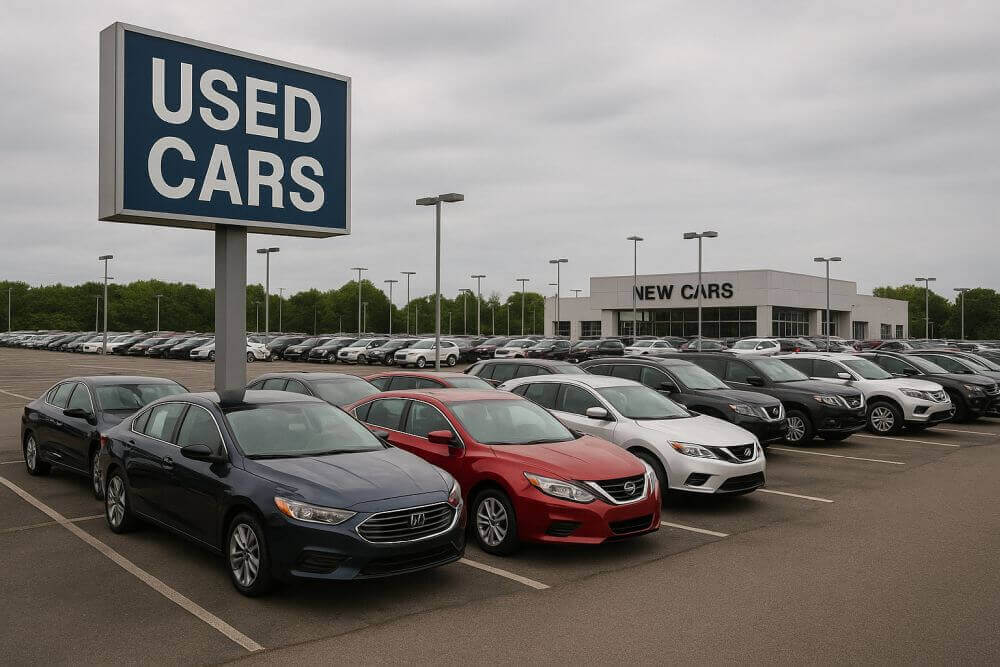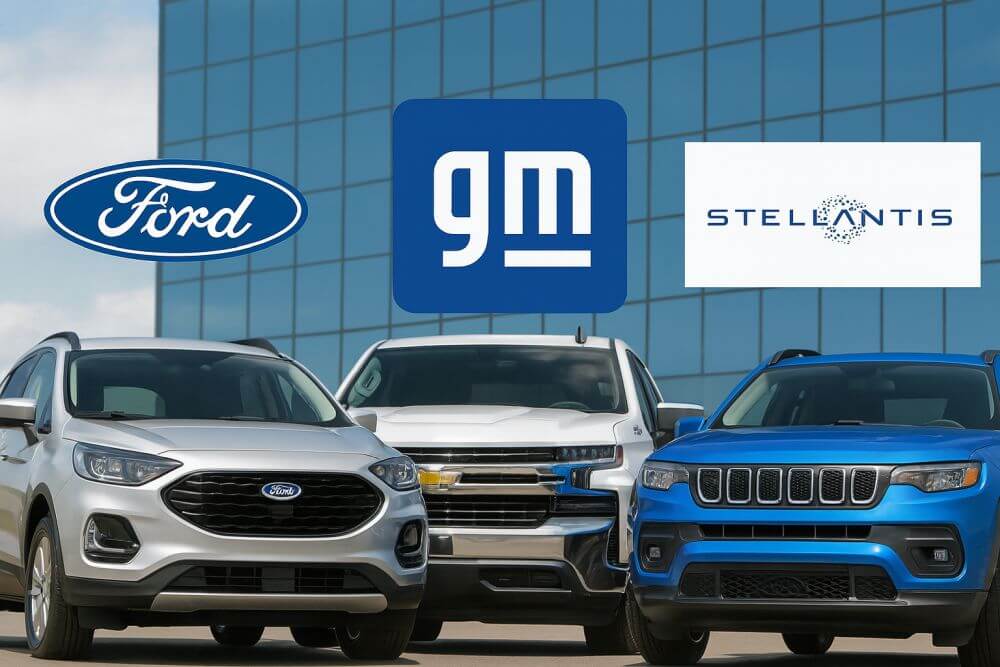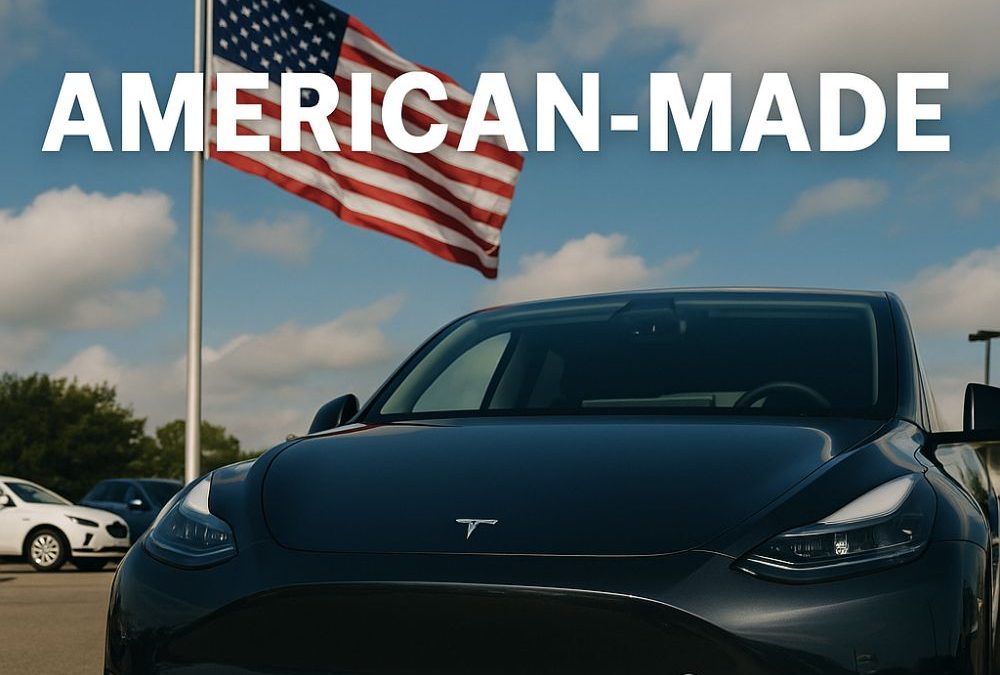A Market Shift in Motion
In 2025, a significant shift is underway in the U.S. automotive market. Soaring new car prices, driven in part by fresh tariffs on imports and parts, have made many Americans reconsider their next vehicle purchase. As inflation lingers and household budgets remain tight, consumers are increasingly turning to used vehicles as the smarter, more accessible option.
This pivot isn’t just anecdotal—it’s measurable. Used car giants like CarMax are reporting stronger sales and revenue growth, while franchised dealerships are ramping up their pre-owned inventory efforts. The economic pressures that once threatened the auto retail sector are now redefining its landscape.

The Tariff Effect: Why New Cars Are Becoming Less Attainable
Rising Import Costs
Recent federal trade policies have reintroduced tariffs on a range of automotive imports, including fully assembled foreign-made vehicles and key auto parts. The goal is to incentivize domestic production and reduce U.S. dependency on overseas suppliers. However, the near-term outcome has been clear: higher vehicle prices across the board.
With tariffs as high as 25% on select vehicle categories and components, many automakers have passed the added costs directly to consumers. Vehicles that once fell into the affordable $30,000–$40,000 range now exceed $45,000 or more, pricing out many middle-income buyers.
Supply Chain Disruptions
Tariffs have also exacerbated existing supply chain issues. Shortages of key components like semiconductors, wiring harnesses, and electric drivetrain parts have led to reduced new car inventories, longer wait times, and fewer incentives at dealerships. For many consumers, the frustration of waiting months for a new vehicle—only to face inflated prices—has tipped the scales in favor of used alternatives.
The Rise of Used Cars: CarMax and Industry Trends
CarMax Leads the Way
CarMax, the largest used vehicle retailer in the United States, has seen a resurgence in demand amid the new car slowdown. With a strong nationwide network, deep inventory pools, and a growing digital presence, CarMax is capitalizing on the current market conditions.
In recent quarters, CarMax reported significant growth in unit sales, revenue, and profit—all signs of a market turning toward pre-owned solutions. Much of this success can be attributed to the company’s ability to offer late-model vehicles in excellent condition at price points well below their new counterparts.
What Consumers Want
Today’s used car buyer is not settling for less. Most are shopping for 2–5 year old vehicles that still offer advanced safety features, infotainment systems, and strong fuel economy. In many cases, these vehicles are indistinguishable from new models, minus the inflated price tag.
The demand for quality used inventory has also created new opportunities for sellers. Many car owners are taking advantage of strong trade-in values, often receiving offers well above book value for vehicles in good condition.
Economic Pressures Driving Consumer Behavior
Higher Interest Rates
New car affordability is not just about sticker price. Financing plays a critical role. As interest rates climb to their highest levels in over a decade, monthly payments for new cars have ballooned. This has pushed many buyers to reconsider whether stretching for a new model makes sense financially.
Used car loans, in contrast, often come with shorter terms, smaller loan amounts, and more flexible approval conditions—particularly for buyers with moderate credit scores. This financial accessibility is one of the key reasons used cars are gaining momentum.
Depreciation Dynamics
Savvy buyers also understand depreciation. A new car loses 20–30% of its value within the first year. By contrast, buying a vehicle that is 2–3 years old means someone else has already absorbed that initial drop in value. For consumers concerned with long-term investment and resale potential, used cars offer better value retention.
Digital Platforms and Buying Habits
Online Shopping Becomes the Norm
The pandemic permanently changed the way Americans shop for vehicles. What began as a health necessity—online browsing, digital paperwork, at-home delivery—has become a standard expectation. Used car retailers have responded by streamlining their websites, apps, and logistics to meet demand.
CarMax, Carvana, and other major players now allow users to search inventory, secure financing, get trade-in quotes, and schedule deliveries without setting foot in a showroom. These digital tools give buyers greater transparency and control—two qualities especially valued in uncertain economic times.
Research Before Purchase
Because used cars vary widely in condition and history, consumers are now doing deeper due diligence before making a purchase. Tools like a vehicle history report have become essential, allowing buyers to verify accident history, title issues, service records, odometer accuracy, and more.
For sellers, transparency is no longer optional. Vehicles with clean histories, documented maintenance, and fewer owners are commanding premium prices on the used market.
Tariffs and the Cost of Ownership
Parts and Repair Inflation
Tariffs don’t just affect vehicle purchase prices—they also impact ownership costs. Many OEM and aftermarket parts are now subject to duties, which raises the price of basic repairs and scheduled maintenance. Brake rotors, sensors, battery modules, and even tires have seen significant price jumps.
For this reason, reliability is now top-of-mind for used car shoppers. Buyers are gravitating toward brands and models known for low maintenance costs and strong parts availability.
Checking a vehicle’s transmission type by VIN or confirming it’s not due for a major service can help reduce surprise expenses.
Insurance and Tax Considerations
Insuring a used vehicle is typically less expensive than insuring a new one—particularly for models with lower market values. In many states, vehicle registration fees and taxes are also based on sale price or assessed value, further enhancing the cost savings of choosing pre-owned over new.
Buyer Tips in a Tariff-Driven Market
If you’re in the market for a vehicle in 2025, here are a few key strategies to consider:
- Shop widely and quickly: Quality used vehicles are in high demand and low supply. Be prepared to act quickly when you find the right model.
- Know your numbers: Use tools like a free VIN check to understand exactly what you’re buying. Look beyond the price tag—verify mileage, title status, recall notices, and more.
- Factor in total cost of ownership: Consider fuel economy, upcoming maintenance, tire replacement, and insurance when comparing vehicles.
- Be flexible: Expanding your search radius or being open to more than one model can increase your chances of finding a great deal.
- Use private sellers cautiously: While there are deals to be found, always verify vehicle records and title legitimacy before paying. Avoid cash-only offers without paperwork.
The Road Ahead: What to Expect
Long-Term Tariff Impacts
As of mid-2025, there is no clear end in sight for the current round of tariffs. Unless significant trade negotiations alter the landscape, elevated new car prices may become the new normal. This will likely sustain elevated demand for used cars into 2026 and beyond.
Used Car Innovation
With demand surging, expect more innovation in how used cars are bought, sold, and reconditioned. From AI-powered vehicle matching to certified used EVs with battery health reports, the segment is evolving fast.
Retailers who embrace data, transparency, and customer experience will thrive. Buyers who do their homework, verify history, and understand the changing market will be best positioned to make smart automotive investments.
Final Thoughts
In a market redefined by tariffs, inflation, and shifting supply chains, the used car sector has emerged not just as a viable alternative—but as the primary vehicle choice for millions of Americans.
Whether you’re downsizing, replacing an aging vehicle, or entering the car market for the first time, used cars offer flexibility, value, and accessibility in uncertain times. But to avoid pitfalls, every buyer needs to be equipped with tools that reveal the full story behind a car’s history and specs.
That’s why using services like a free VIN check or vehicle history report isn’t optional—it’s essential.
Ready to buy smarter? Start your research with a free vehicle history report from VinCheckPro.


